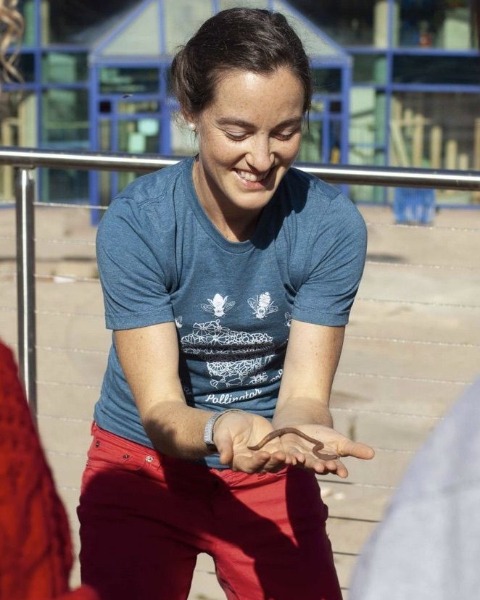Back
Contributed Talk
Session: : Urban Ecosystems 2
COS 46-1 - No Mow May in Wisconsin: A pollinator Conservation and Citizen Education Initiative
Monday, August 7, 2023
3:30 PM - 3:45 PM PDT
Location: E146

Israel Del Toro, Ph.D.
Associate Professor of Biology
Lawrence University
Appleton, Wisconsin, United States
Relena R. Ribbons, Ph.D.
Assistant Professor of Geosciences
Lawrence University
Appleton, Wisconsin, United States
Presenting Author(s)
Coauthor(s)
Abstract: No Mow May (NMM) is a community science initiative popularized in recent years that encourages property owners to limit their lawn mowing practices during the month of May. The goal of NMM is to provide early season foraging resources for pollinators that emerge in the spring, especially in urban landscapes when few floral resources are available. We worked with the city councils of Appleton, Oshkosh, Stevens Point and Wausau Wisconsin, USA. to allow NMM to take place in May 2020 and 2021. Four hundred and thirty- five property owners registered for No Mow May in Appleton alone in 2020. In the same year, we measured floral and bee richness and abundance in the yards of a subset of homes (N = 20) located near regularly mowed urban parks (N = 15) at the end of the month. In 2021 we expanded the NMM effort to several other municipalities and evaluated bee diversity, abundance and composition in paired No Mow vs regularly mowed yards (N=30 paired plots).
We found that homes that participated in NMM had more diverse and abundant flora than regularly mowed green spaces throughout the city. No Mow May homes had three times higher bee richness and five times higher bee abundances than frequently mowed greenspaces in Appleton in 2020 and similar trends across the other municipalities in 2021. Using generalized linear models, we found that the best predictor of bee richness was the size of the designated unmowed area, and the best predictors of bee abundances were the size of the unmowed area as well as floral richness. While our findings cannot conclusively attribute increases in bee abundances and richness to the No Mow May efforts, our data does show that bee pollinators make use of no mow spaces as key floral resources during early spring in the upper midwestern United States. The NMM initiative educated an engaged community on best practices to improve the conservation of urban pollinators in future years.
We found that homes that participated in NMM had more diverse and abundant flora than regularly mowed green spaces throughout the city. No Mow May homes had three times higher bee richness and five times higher bee abundances than frequently mowed greenspaces in Appleton in 2020 and similar trends across the other municipalities in 2021. Using generalized linear models, we found that the best predictor of bee richness was the size of the designated unmowed area, and the best predictors of bee abundances were the size of the unmowed area as well as floral richness. While our findings cannot conclusively attribute increases in bee abundances and richness to the No Mow May efforts, our data does show that bee pollinators make use of no mow spaces as key floral resources during early spring in the upper midwestern United States. The NMM initiative educated an engaged community on best practices to improve the conservation of urban pollinators in future years.
